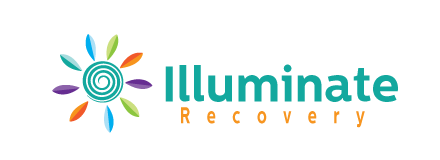As the medical world learns more about substance use disorders and how they impact individuals, treatment continues to advance in new and interesting directions. One of the most promising approaches that health care providers are now exploring focuses on harm reduction. Among individuals who experience substance use disorders, “harm” refers to the other contributing factors that could cause damage beyond the effects of the substance itself. For instance, getting a DUI charge after driving while intoxicated or overdosing after consuming a dose of laced cocaine could be forms of harm.
In these cases, the use of the substance along with outside contributing factors played a part in harming the consumer. Harm reduction is the process of responsibly taking control of those outside contributing factors to reduce an individual’s risk of experiencing further harm due to a substance use disorder. Learn more about harm reduction, including how it works, the principles behind this practice, the benefits it offers, and how you can combine MAT and harm reduction to support successful long-term recovery.
What Is Harm Reduction?
Harm reduction is a set of practical strategies implemented to help substance users reduce the harm associated with substance use disorders. This might include drug testing kits or labs, options for opioid replacements, emergency overdose medication, and much more.
These practices do not aim to directly remove the substance from the person’s life, make sobriety a precondition for obtaining support, or punish them when they fail to meet the ideal treatment outcome. Instead, they focus on treating patients with respect, compassion, and dignity, avoiding judgment or stigmatizing language, and helping them find realistic, actionable, and evidence-based solutions for their problems.
For the users themselves, harm reduction is a lifestyle change in which patients continue to actively use illicit drugs while also striving to maintain their health in other ways. One of the most formidable challenges of harm reduction is the continuous demand it places on the patient’s willpower as they commit to consciously applying harm reduction practices in their daily life.
Depending on the person and whether they have an existing support system in place, this can be incredibly difficult. However, research shows that substance users who actively take part in harm reduction can improve their overall lifestyle through reduced risks.
How Does Harm Reduction Differ from Prevention?
Prevention and harm reduction both aim to create healthy communities and reduce the harm experienced by patients with substance use disorders. However, prevention only helps individuals avoid using substances and does not consider how to help individuals with existing substance use issues.
The prevention/harm reduction spectrum features three sections:
- Primary – The primary approach focuses on preventing the initial use of a substance or delaying this use. It involves targeting young people before they begin experimenting with substances and discouraging them from terminating drug use after it occurs to avoid developing a substance use disorder.
- Secondary – The secondary step occurs after an individual has developed a substance use disorder and pursues rehab, harm reduction, or other solutions to treat this disorder. In most rehabilitation programs, the first step is undergoing detoxification to remove the substance from the patient’s body and support them as they experience acute withdrawal symptoms. This “cold turkey” approach can help patients cease substance use in the short term, but they come with expenses and problems that can prompt relapse and prevent patients from achieving long-term sobriety.
- Tertiary – The goal of the tertiary approach is to reduce the harm caused by existing substance use disorders and prevent relapse, further health deterioration, or death. In contrast with rehab programs, harm reduction practices aim to help patients minimize health risks, even if they continue to use the substance. This approach can significantly reduce the chances of relapse and death while also preventing diseases and other problems associated with typical drug use.
What Are the Principles of Harm Reduction?
Harm reduction involves a set of strategies in which care providers meet users “where they’re at” and help them manage conditions they experience alongside the substance use disorder. Because achieving sobriety is heavily reliant on developing a support self-help routine, many of the principles of harm reduction are directed towards the public, friends, or family.
Like the principles found in Alcoholics Anonymous support groups, the underlying goal of harm reduction principles is to support both the person seeking help for their substance use disorder and those around them.
These principles consist of:
- Accepting that illicit drug use is part of the world and choosing to support the betterment of these users rather than condemning them for their actions.
- Understanding that drug use is a complex set of behaviors that manifests on a spectrum while acknowledging that some methods of substance use are safer than others.
- Establishing that improving the quality of individual and community life and well-being are needed for successful drug intervention and policies and recognizing that this can occur without the immediate cessation of all drug use.
- Taking a non-judgmental and non-coercive approach to substance users and their communities by providing resources and services that reduce harm.
- Ensuring that substance users have an active role in changing or creating the programs, services, and policies that impact them.
- Confirming that people are the primary agents for reducing the harmful effects of their substance use and helping them make positive decisions by providing information and supportive strategies aimed at their conditions of use.
- Recognizing that circumstances such as poverty, class, racism, isolation, trauma, and other social influences increase vulnerability to substance use and reduce the ability to effectively manage drug-related harm.
- Not ignoring or minimizing the danger and harm correlated with illicit drug use.
How Does Harm Reduction Differ from Rehab?

Harm reduction services have proven to be extremely helpful in preventing death and serious injury, as well as reducing substance use over time compared to rehab programs. Some rehab programs may boast a ‘100% success rate,’ but this statistic only applies to patients who are first admitted, often voluntarily, and then complete the full program. Rehab is a limited form of treatment lasting approximately 30 days, and patient outcomes vary drastically depending on the cost, substance used, and individual factors that can hinder success.
After those 30 days are over, the rehab center is no longer responsible for these patients, yet most patients require further services to achieve long-term sobriety and cope with the recurring struggle of relapse.
Beyond 30 Days of Treatment
Harm reduction offers ongoing support to substance users beyond one 30-day period of intensive treatment. Many doctors, institutions, programs, and peer support groups are devoted to helping users learn the practice of harm reduction. Harm reduction strategies are informed by a more complete understanding of people, institutions, and services, so patients can receive the care they need while continuing to live their daily lives.
Because these strategies are attuned to the wide range of factors that impact substance use, patients are less likely to relapse while practicing them. Even if patients have not ceased substance use, they can still use these strategies to reduce their usage and manage risks.
What Are the Benefits of Harm Reduction Related to Substance Use?
Harm reduction features the following benefits:
- Costs significantly less than alternative programs, even after drug costs
- Increases availability of and referrals to support and social service programs
- Reduces damaging stereotypes and stigma around substance use
- Increases knowledge for safer substance use
- Reduces contamination when sharing substances
- Reduces overdoses and early deaths
- Reduces unplanned pregnancies and STDs among users
What Are Some Examples of Harm Reduction?

Harm reduction enables substance users to consume their drug of choice safely to reduce the risk of death, criminal activity, or overall harm to themselves and the people around them.
The most common examples of harm reduction programs include:
- Support groups, hotlines, and outreach programs
- Needle distribution and recycling programs
- Syringe service programs (SSPs) that provide a safe, supervised place to use substances with clean needles
- Rapid fentanyl test strips (FTS) to help users detect the presence of fentanyl in the substances they acquire and discard them before use
- Opioid overdose prevention kits with naloxone that can prevent brain injury or death
- MAT or opiate alternatives that help reduce withdrawal symptoms
- Mental wellness and support centers, including peer support programs
- Impaired driving prevention programs
- Free, publicly available databases with information on various substances and how to take them safely
- User managed websites where people can submit stories about their experiences, such as how they responded when combining certain substances
MAT and Harm Reduction
Medicated assisted treatment or MAT is a form of harm reduction that has shown to be particularly effective among opioid users. When someone who uses opioids abruptly stops, they experience severe, long-lasting withdrawal symptoms. Withdrawing from opioids can take weeks and is an extremely damaging process, both psychologically and physically.
Even when users recognize that terminating opioid use is in their best interest and want to begin recovery, withdrawal symptoms are one of the biggest obstacles to taking the first step. While cravings do increase during withdrawal, many users relapse at this time not because they want to feel “high” but because they are suffering and want to end their discomfort.
MAT refers to using medication along with counseling and behavioral therapies to help patients manage sustain recovery. It involves prescribing patients an alternative to opioids that blocks the effects of narcotics and combats withdrawal symptoms.
Methadone, naltrexone, and buprenorphine are the three most prescribed opiate MAT medications. It is important to note that these medications do have side effects, and MAT cannot “cure” a substance use disorder. To be successful in recovery, patients must also receive counseling, develop a strong social support system, and commit to participating in aftercare programs.
When used properly to manage recovery, MAT has been shown to:
- Reduce cravings during early recovery
- Alleviate withdrawal symptoms
- Lower the risk of relapse
- Increase treatment retention
- Improve patient survival
- Decrease criminal activity associated or illicit conduct with opiate use
- Reduces HIV and hepatitis C infection rates
- Enhance ability to secure and maintain employment
- Improve birth outcomes among pregnant women with substance use disorders
How Can I Practice Harm Reduction?
The first step in practicing harm reduction is to admit you have a substance use disorder and be willing to take control of this problem. After you commit to obtaining help, the next step is to educate yourself about your options for harm reduction programs. The National Harm Reduction Coalition publishes information to support safer drug use, provides access to naloxone to reduce overdose deaths, and operates syringe service programs so patients can consume substances in safe settings. They also offer training on evidence-based harm reduction for providers, work with local community leaders to pass policy initiatives, and hold events to help change the stigma around substance use and encourage dialogue and advocacy.
Find Illuminate Recovery Harm Reduction Treatment
In addition to MAT, our treatment center provides detox, intensive outpatient programs, individual and group therapy options, relapse prevention, and other tools available for recovering substance users new to harm reduction. Our team of professional health care providers can create a customized treatment plan based on your unique needs that helps you sustain long-term recovery.

Having been on both sides of active addition, both the person using, and the person affected by a loved one using drugs and alcohol, Lucas has been involved in recovery since 2009. He has been working in the treatment industry since 2013. Using his personal experience and wealth of knowledge learned from professional development and immersion in the recovery field, he has spoken with thousands of families and helped hundreds of people attain long-term sobriety. In 2020, the opportunity presented to join in and start Illuminate Recovery. Understanding the importance of personalized treatment plans and the complex nature between substance abuse and co-occurring disorders, has helped Illuminate Recovery build a strong curriculum and a phenomenal staff. Illuminate Recovery now has a medical doctor who is board certified in addiction medicine and a psychiatric medical doctor who works side by side with independently licensed therapists to provide compassionate and effective treatment.

